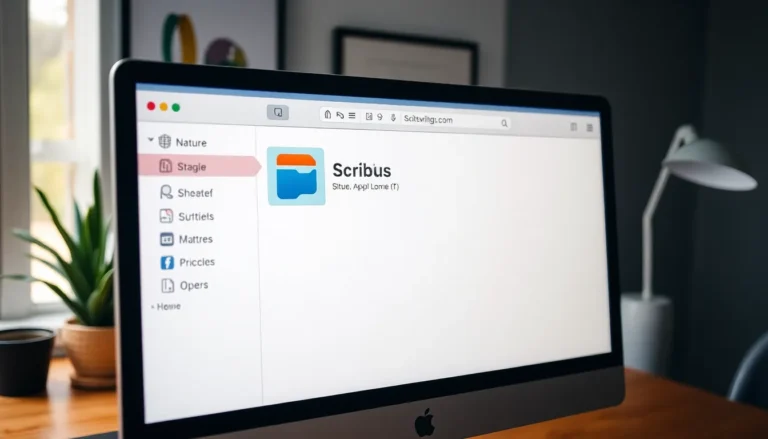Navigating the world of Social Security can feel like trying to solve a Rubik’s cube blindfolded. Many people wonder if they can just stroll into a Social Security office without an appointment, hoping to avoid the dreaded waiting game. After all, who doesn’t love a good surprise—unless it’s a surprise wait time that stretches longer than a Monday morning?
While the answer isn’t as straightforward as a game of tic-tac-toe, understanding the ins and outs of walk-in visits can save time and sanity. Whether you’re looking to apply for benefits or need assistance with your account, knowing the rules of engagement can make a world of difference. So, let’s dive into the details and find out if that spontaneous trip to the Social Security office is a brilliant idea or a recipe for frustration.
Table of Contents
ToggleUnderstanding Social Security Office Policies
Visiting a Social Security office without an appointment raises important considerations about office policies. Knowledge of the rules can guide individuals in ensuring a smooth experience.
General Requirements for Visiting
Visitors must present valid identification and necessary documents when entering a Social Security office. Expect specific forms of ID, such as a driver’s license, passport, or Social Security card. Arriving early enhances the chances of minimizing wait times. Offices may have limited capacity for walk-ins, necessitating patience. Accommodations exist for individuals with disabilities, ensuring accessibility.
Importance of Appointments
Appointments promote efficient service at Social Security offices. Scheduling an appointment guarantees a specific time slot, reducing overall wait times. Many individuals find it easier to plan their visit around their schedules with an appointment. Online booking systems allow for quick and convenient scheduling. Those with complex inquiries benefit from pre-arranged meetings, ensuring they receive adequate assistance.
When You Can Walk In

Walk-in visits to Social Security offices are sometimes allowed, but specific conditions apply. Understanding these will help visitors navigate their options effectively.
Specific Situations Permitting Walk-Ins
Emergency cases occasionally permit walk-in visits. Immediate needs, such as urgent applications for disability benefits or lost Social Security cards, often qualify. Additionally, issues like payment problems call for immediate attention. Walk-ins might also be accepted when visitors cannot schedule an appointment due to specific circumstances. Despite this, local office policies vary, making it essential to check in advance.
Locations Allowing Walk-Ins
Certain locations accept walk-ins, while others emphasize appointments. Urban offices typically accommodate more walk-ins because of higher foot traffic, whereas rural offices may not. Major metropolitan areas often have designated times for walk-ins to stabilize visitor flow. Visitors should confirm their local office’s policy before heading out, as availability can change. Familiarizing oneself with the nearest office’s guidelines ensures a smoother experience.
Potential Challenges of Walk-In Visits
Walk-in visits to Social Security offices can present numerous challenges. Understanding these challenges can help visitors adequately prepare.
Long Wait Times
Long wait times often occur during walk-in visits. Many factors contribute to this issue, including high foot traffic and limited staffing. On average, wait times can reach several hours, particularly in busy urban locations. Visitors may find themselves waiting longer during peak hours, especially at the beginning of the month when benefit checks are issued. Knowing the busiest times can assist individuals in planning their visit for a less frustrating experience. Arriving early may also reduce wait times, providing a better chance of completing their business promptly.
Limited Availability of Services
Limited availability of services can complicate walk-in visits. Some offices may not provide certain services without an appointment, such as in-depth consultations or complex claim processing. Access to help may vary by location, with urban offices offering more comprehensive options compared to rural ones. Visitors should be aware that specific documents may be required for certain services. Without proper documentation, individuals might leave the office without resolving their inquiries. Checking the local office’s policies can provide clarity on what services are available for walk-in visitors.
Recommendations for First-Time Visitors
First-time visitors should understand how to navigate their trip to a Social Security office effectively. The experience can be streamlined with some preparation.
Preparing for Your Visit
Check the office hours and plan to arrive early. Early arrivals often shorten wait times. Some locations experience busier periods, particularly on Mondays and Fridays. It’s wise to check if the office accommodates walk-ins. Research local office policies online to avoid surprises. Knowing peak hours can also help avoid long waits. A quick phone call can clarify the local office’s specific practices.
Documents to Bring
Collect necessary documents before heading to the office. Valid identification is crucial, whether it’s a driver’s license or a passport. Bringing your Social Security card is also recommended, as it speeds up the process. If applying for benefits, include any relevant forms or notifications. Medical documentation may be necessary for disability applications. Visitors should ensure all documents are current and available to prevent delays. Checking which documents are required can save time during the visit.
Walking into a Social Security office without an appointment can be a daunting task. Visitors should weigh the potential for long wait times against the urgency of their needs. Understanding local office policies and preparing necessary documents can make the experience smoother.
For those with urgent matters or specific inquiries, checking the office’s capacity for walk-ins is crucial. While spontaneous visits may sometimes be necessary, scheduling an appointment is often the best way to ensure efficient service. By planning ahead and being informed, visitors can navigate the process more effectively and reduce the frustration that often accompanies walk-in visits.









